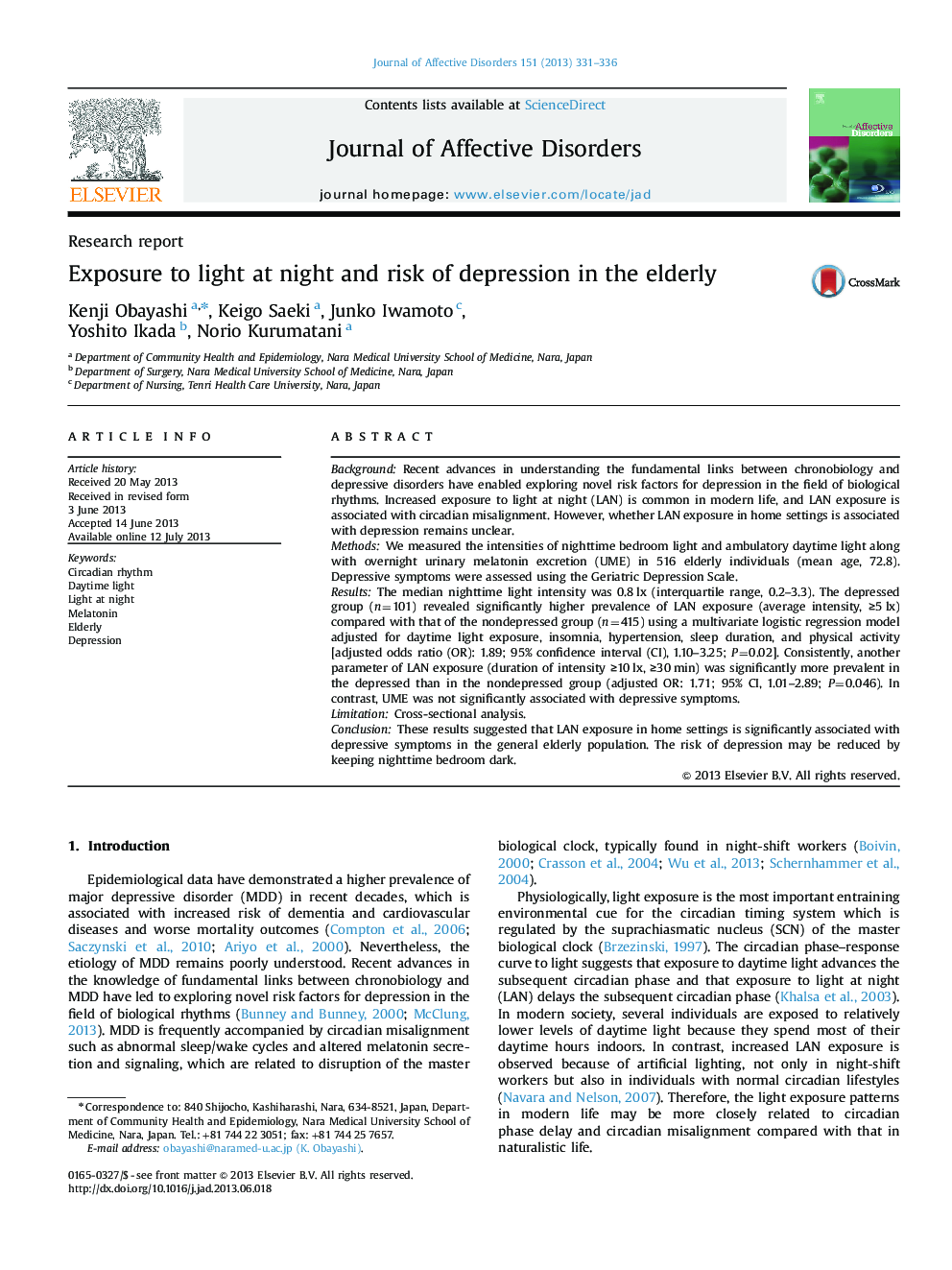| Article ID | Journal | Published Year | Pages | File Type |
|---|---|---|---|---|
| 6234100 | Journal of Affective Disorders | 2013 | 6 Pages |
BackgroundRecent advances in understanding the fundamental links between chronobiology and depressive disorders have enabled exploring novel risk factors for depression in the field of biological rhythms. Increased exposure to light at night (LAN) is common in modern life, and LAN exposure is associated with circadian misalignment. However, whether LAN exposure in home settings is associated with depression remains unclear.MethodsWe measured the intensities of nighttime bedroom light and ambulatory daytime light along with overnight urinary melatonin excretion (UME) in 516 elderly individuals (mean age, 72.8). Depressive symptoms were assessed using the Geriatric Depression Scale.ResultsThe median nighttime light intensity was 0.8 lx (interquartile range, 0.2-3.3). The depressed group (n=101) revealed significantly higher prevalence of LAN exposure (average intensity, â¥5 lx) compared with that of the nondepressed group (n=415) using a multivariate logistic regression model adjusted for daytime light exposure, insomnia, hypertension, sleep duration, and physical activity [adjusted odds ratio (OR): 1.89; 95% confidence interval (CI), 1.10-3.25; P=0.02]. Consistently, another parameter of LAN exposure (duration of intensity â¥10 lx, â¥30 min) was significantly more prevalent in the depressed than in the nondepressed group (adjusted OR: 1.71; 95% CI, 1.01-2.89; P=0.046). In contrast, UME was not significantly associated with depressive symptoms.LimitationCross-sectional analysis.ConclusionThese results suggested that LAN exposure in home settings is significantly associated with depressive symptoms in the general elderly population. The risk of depression may be reduced by keeping nighttime bedroom dark.
